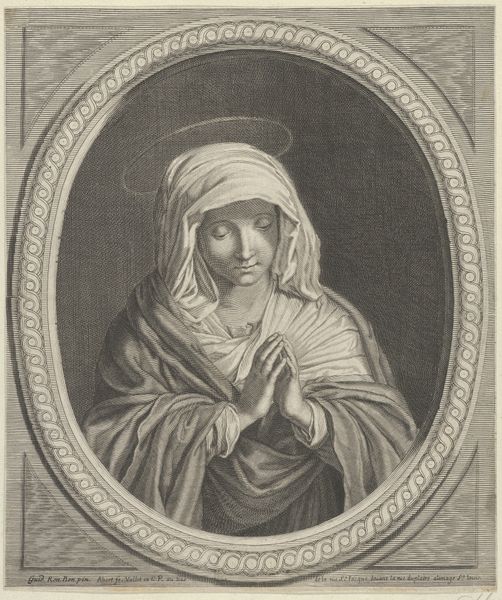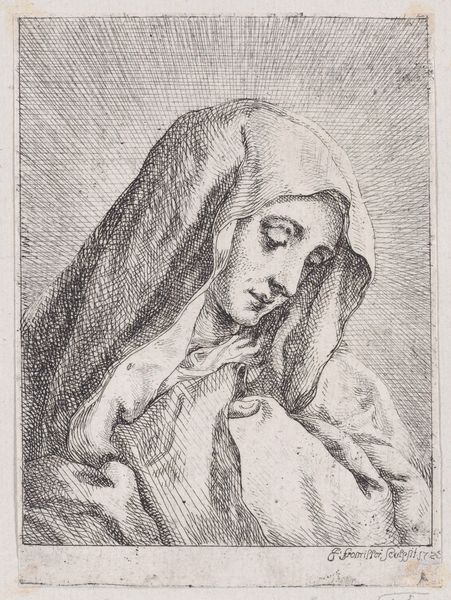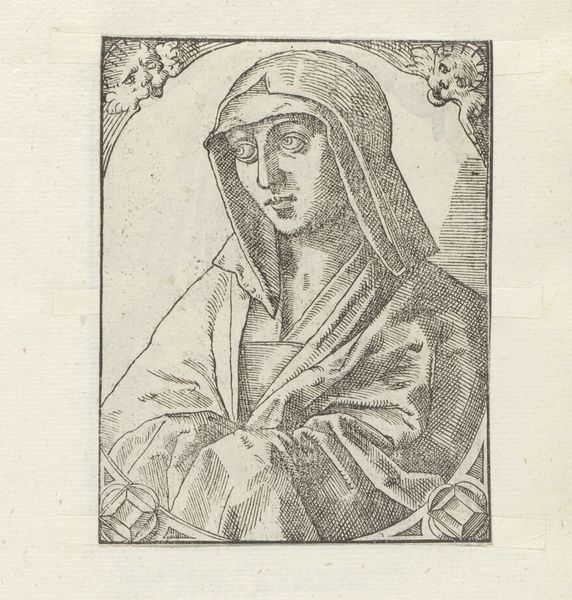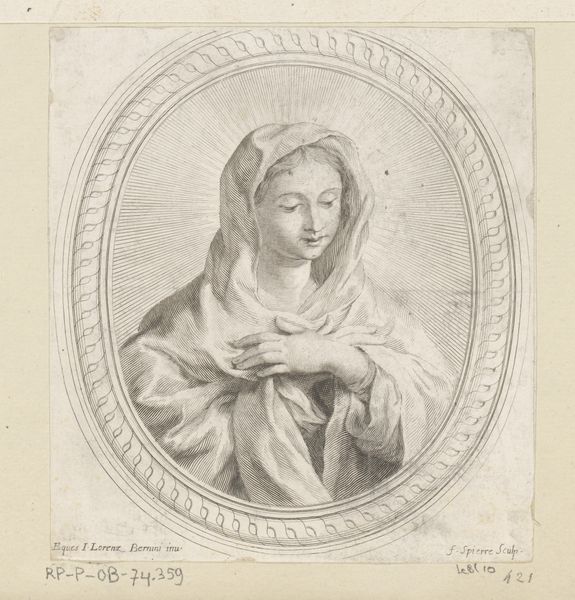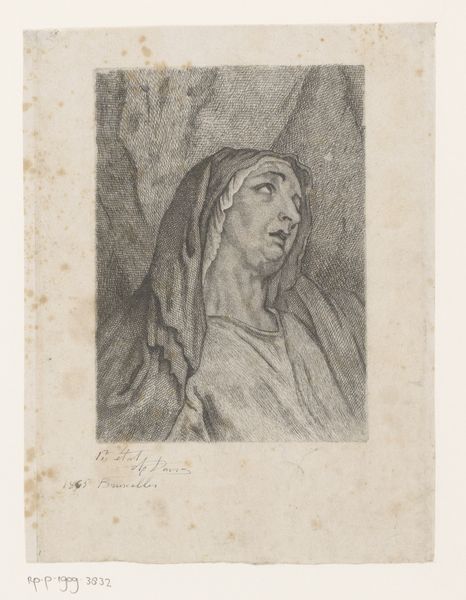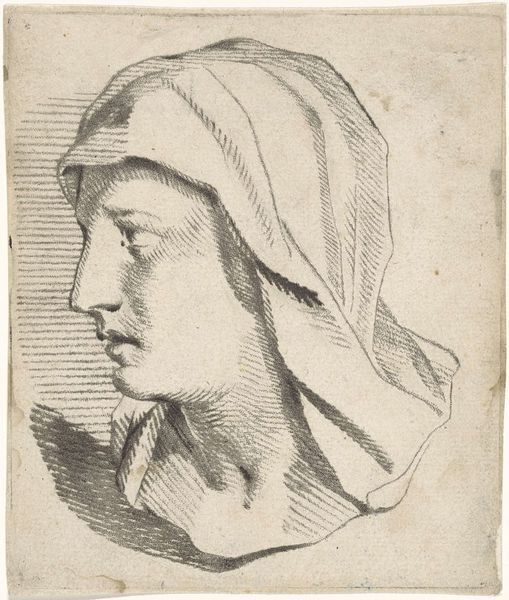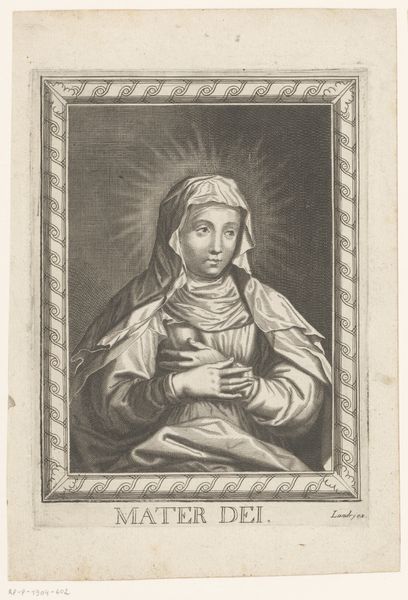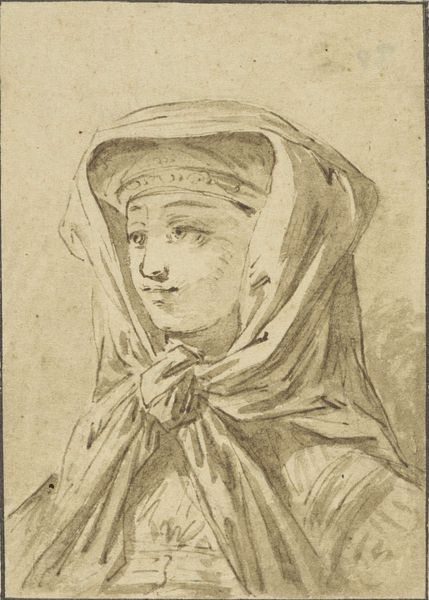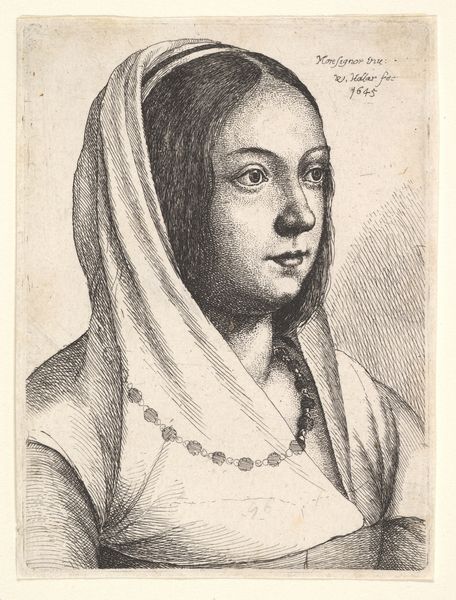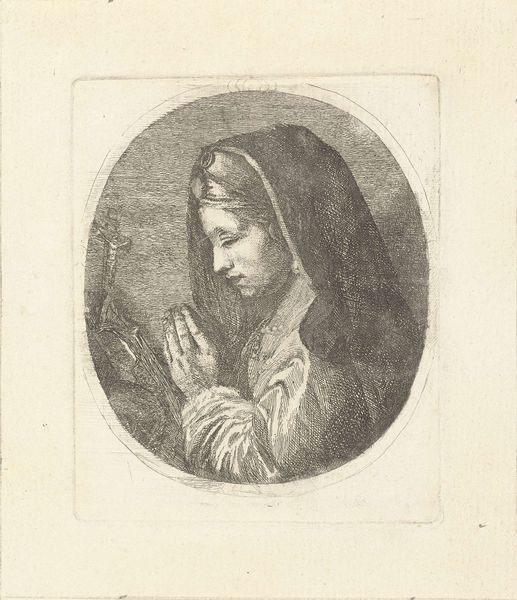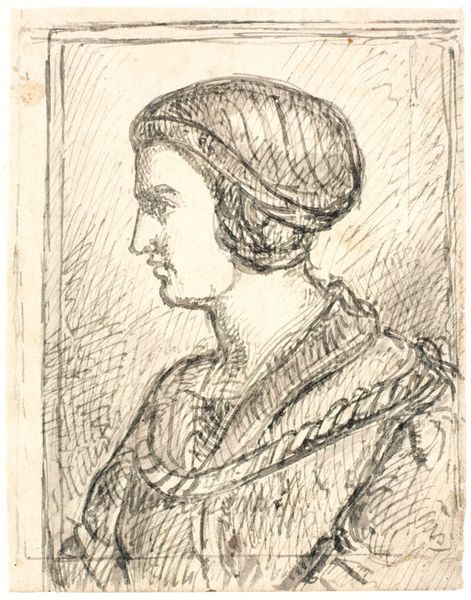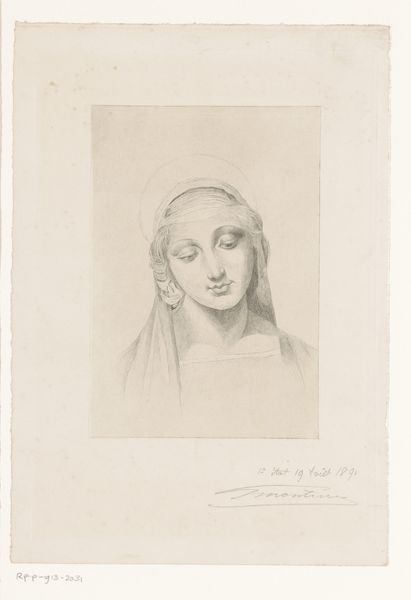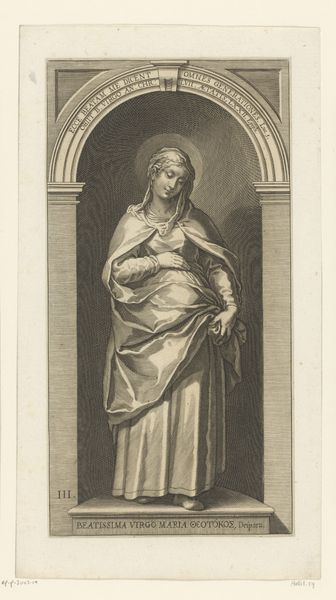
The Virgin in prayer, seen in profile facing left, in an oval frame, from "Christ, the Virgin, and Thirteen Apostles" 1595 - 1645
0:00
0:00
drawing, print, engraving
#
portrait
#
drawing
# print
#
figuration
#
form
#
line
#
history-painting
#
italian-renaissance
#
engraving
#
virgin-mary
Dimensions: Sheet: 3 3/4 × 3 1/16 in. (9.6 × 7.7 cm)
Copyright: Public Domain
Curator: Immediately, I’m struck by how intimate this piece feels, like a whispered secret captured in ink. Editor: Yes, the rendering is quite personal. The work, residing here at the Metropolitan Museum of Art, is titled "The Virgin in prayer, seen in profile facing left, in an oval frame, from 'Christ, the Virgin, and Thirteen Apostles.'" Although the author is unknown, it dates back to somewhere between 1595 and 1645. It’s an engraving, part of a larger series, focusing here specifically on the Virgin Mary. Curator: The Virgin's gaze is intensely focused. What does it mean for a woman's body to be forever frozen into this quiet contemplation, as an object of almost exclusively male gaze? What agency, if any, is granted to the Virgin in these repeated portrayals? Editor: Those are the precise questions that haunt the patriarchal interpretations of motherhood that are central to the historical context. The repetitive iconography of the Virgin can be seen as deeply embedded in social power dynamics, in particular when evaluating her role in both religious and secular systems. Curator: There's something about the linear quality too. It feels almost fragile, ephemeral. Editor: Absolutely. Line as form is powerful here. The stark lines defining her face, the delicate drapery. The choice of engraving as a medium really lends itself to this starkness. But this wasn't just about artistic decisions; prints made religious imagery more accessible to the masses, offering a visual tool for personal devotion. It speaks to the power of the printing press during this era to disseminate both spiritual beliefs and political ideologies. Curator: So, mass production met intimate contemplation. That juxtaposition itself raises interesting questions about authenticity, about access, and about how images shape belief. There is something very intense about the portrait-style framing in the work too. She is both vulnerable and resolute, an object but a subject, an every-woman but the single Virgin, almost a case study. Editor: The very oval frame confines yet highlights the intense focus of her gaze. The image becomes a kind of mirror, challenging viewers across centuries to confront their own perceptions of devotion and female agency. Curator: Well, I will leave with those challenging paradoxes, where history, religion, and visual culture intertwine. Thanks for your thoughts. Editor: Indeed, the image truly highlights not just devotion but also quiet reflection about historical and continuing issues.
Comments
No comments
Be the first to comment and join the conversation on the ultimate creative platform.
